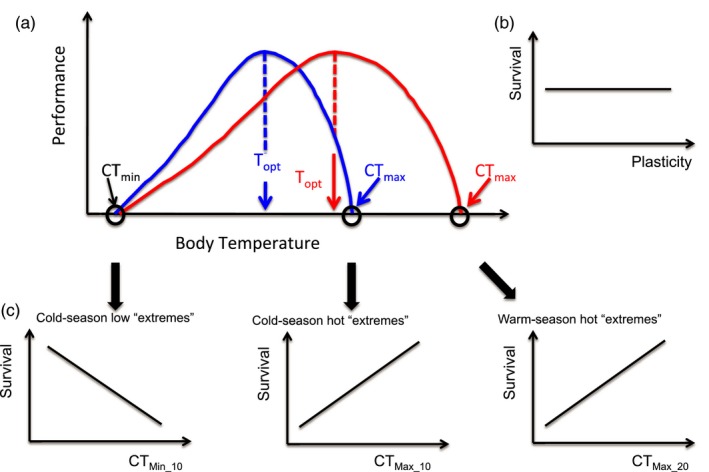Figure 1.

Graphical representation of the theory tested in this study. (a) Predictions developed from findings showing that acclimation to warmer temperatures produces an increase in the upper but not in the lower limits of the thermal performance curve (Ruiz‐Aravena et al., 2014). (b) The high seasonality should select for plasticity, and therefore, plasticity of all thermal traits should currently be under directional selection. (c) If daily low extremes are frequent, negative directional selection on CTMin during the cooler periods of the year is expected (left panel). If daily high extreme temperatures are frequent, positive directional selection on CTMax during the warmer periods (right panel) as well as the cooler periods of the year is expected (middle panel). We predict no directional selection on T Pref and Q 10 at both acclimation temperatures and on CTMin when warm‐acclimated. Cold acclimation is indicated by a _10 subscript, while warm acclimation is indicated by a _20 subscript
